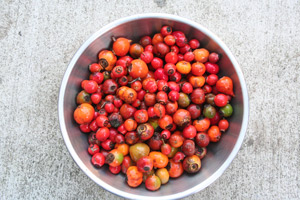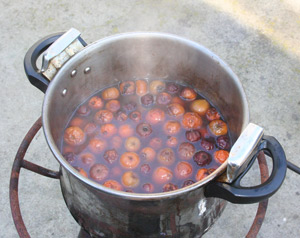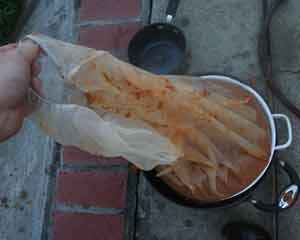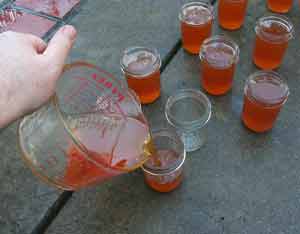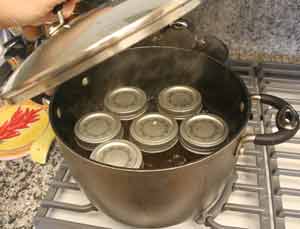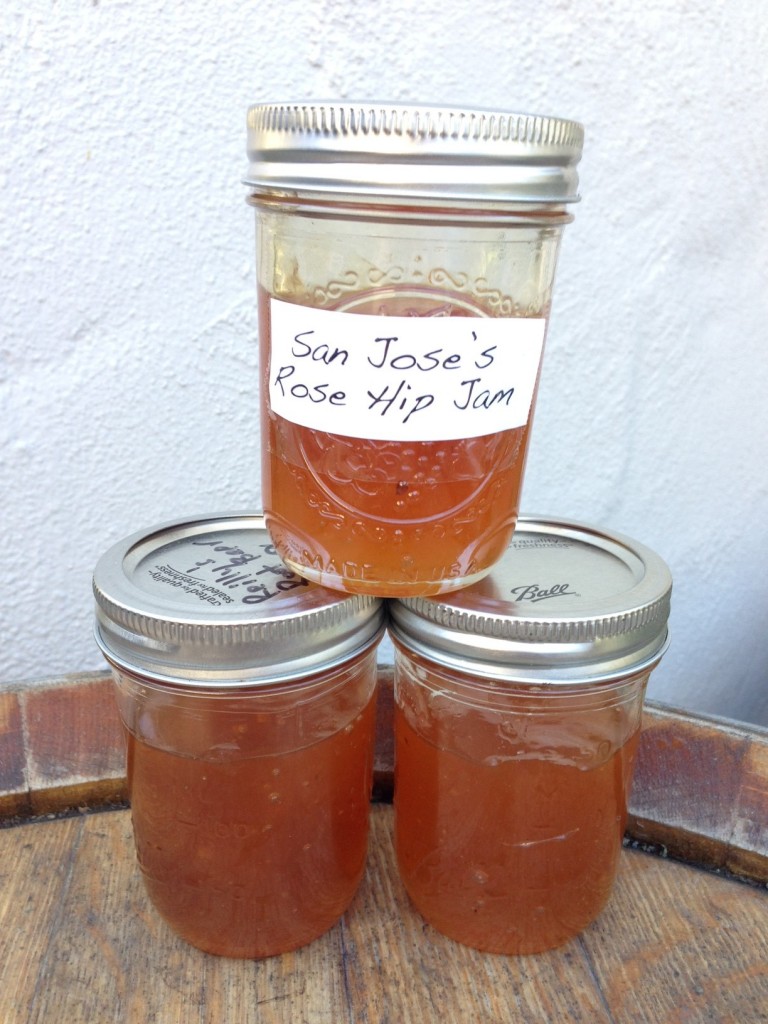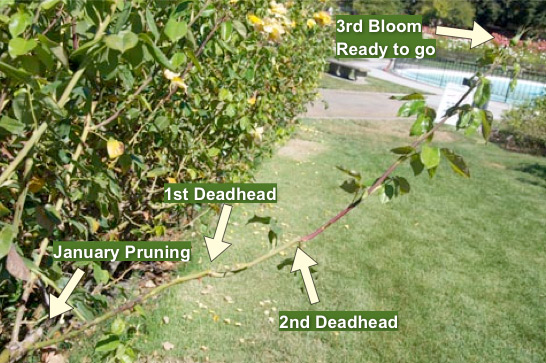As winter approaches, we stop deadheading to let the roses slow down and store their energy. Many roses form hips, and some are quite decorative. They are full of vitamin C and it is nit uncommon to see Rose Hip Tea in the stores.
But you can also make rose Hip Jam and Jelly. At an upcoming Master volunteer event, Rose Hip Jam made by Terry will be raffled off.
Here’s the step by step procedure to used to make the Jam:
Recipe loosely based upon this one HERE
